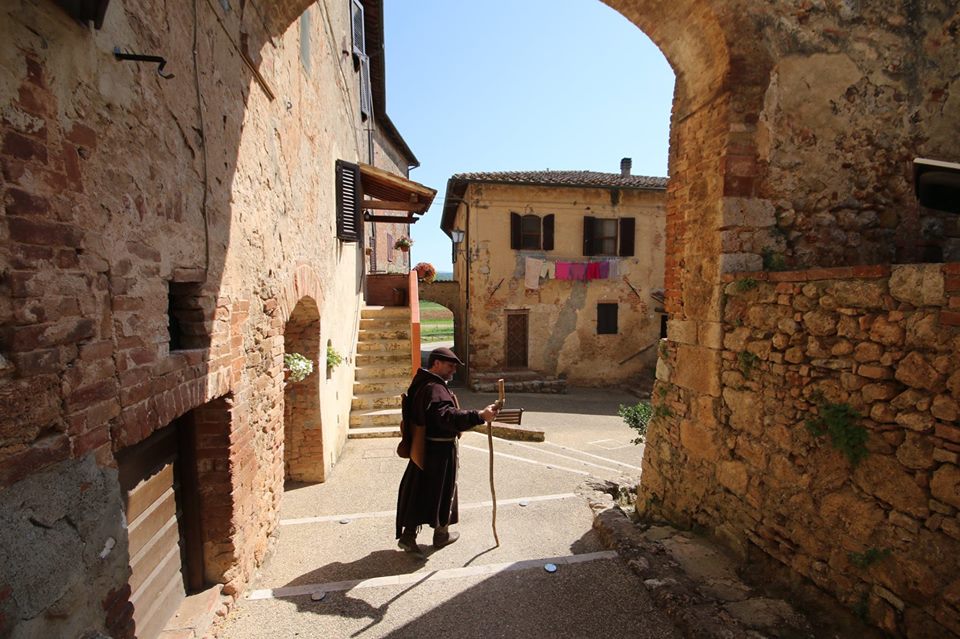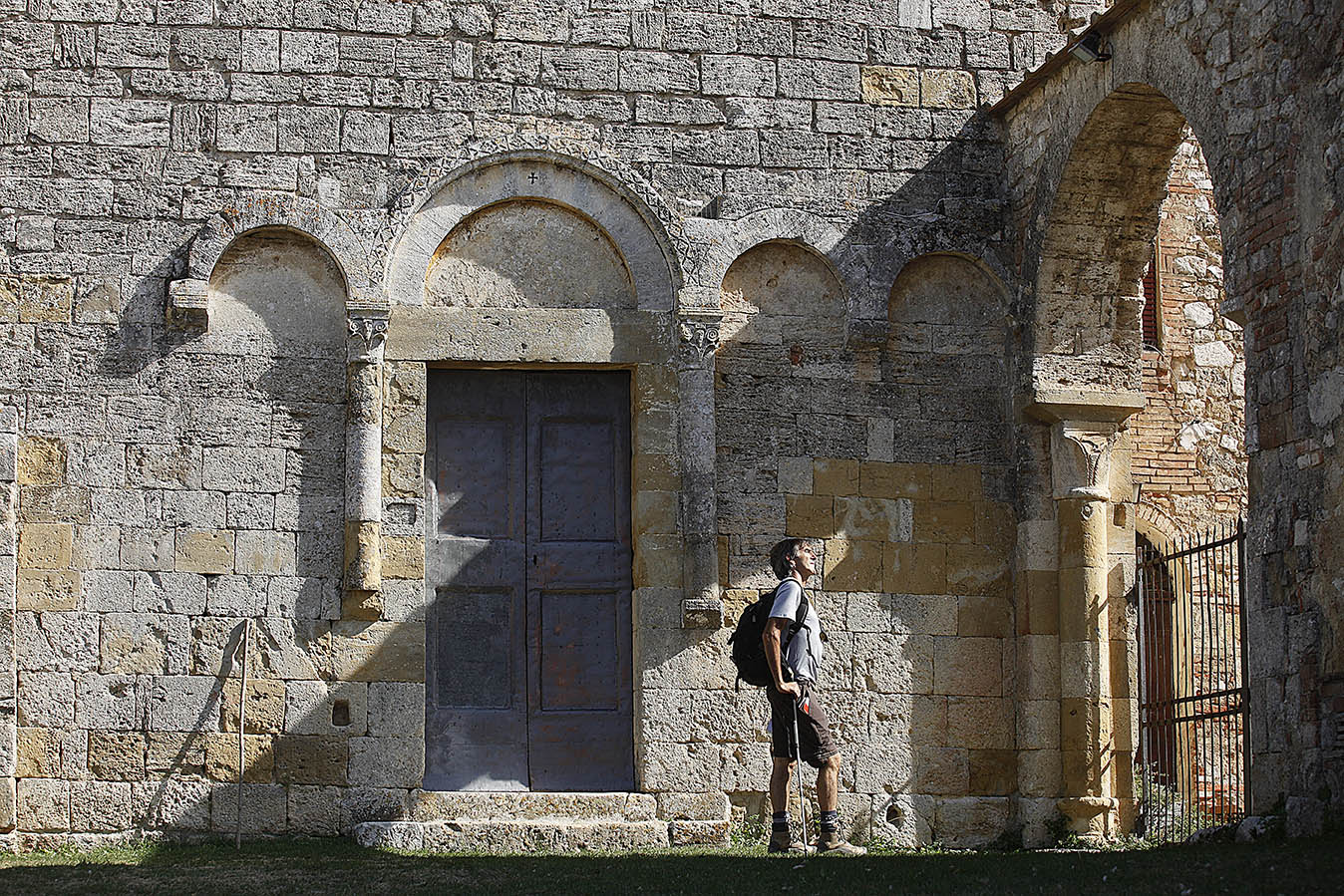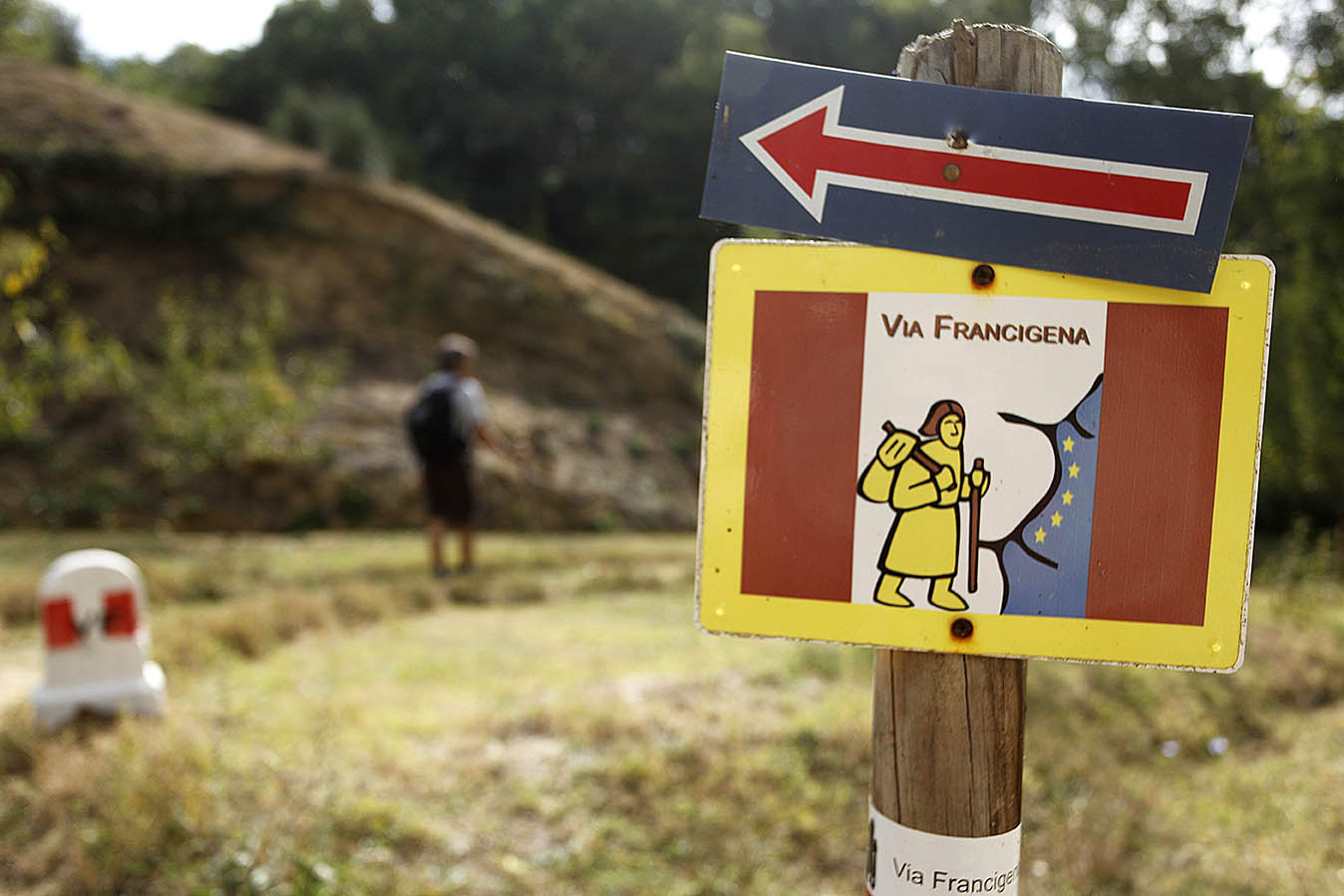Joys and pains of walking
A walking trip can treat the walker with wonderful moments, but it can also cause some physical problems
We have already talked about the many pilgrim paths of Tuscany and the Via Francigena. With this article we want to go in depth about what it means to walk along one of these paths. A walking trip can treat the walker with wonderful moments, but it can also cause physical problems of several kinds that you'd better be aware of before leaving. Long distance walking generally gets the pilgrim in an incomparable state of psychophysical wellbeing. Travelling by foot lets you enter a dimension of harmony – with your own body, with nature, with people – that is out of reach in daily life. However each rose has its thorns, no point in hiding it, and the enduring effort, especially on the first days of the walk and for the less fit, can cause sundry physical problems. For the most part, these are small ailments that can be cured with some basic practical knowledge and common sense. In this article you'll find a few hints about this, with no intention whatsoever of taking the the place of the doctor, and actually suggesting to see one as soon as you get a chance.
-
1.Prevention
-
2.Blisters
-
3.Inflammations
-
4.Muscle pain, cramps, sprains and strains
-
5.Sunstrokes and heatstrokes
-
6.Dehydration
-
7.The first aid kit
-
8.Walking as a treatment
Prevention

Most physical problems can be prevented using a little common sense: the walking pace and length of the stages, especially at the beginning of the journey, should be kept well below your physical limits, then gradually increase. It is essential to wear comfortable shoes and drink a lot of water with added salts. You can use an electrolyte, which you can buy in sports shops, stores or pharmacies, or you can make your own drink. For example with 1 litre of water, the juice of 2 lemons, 1 teaspoonful of sodium bicarbonate and 2 of sugar.
Blisters
Blisters are the major problem for pilgrims, on any path. They are caused by the rubbing of the foot's skin against the shoe, and are favoured by bacteria and oversweating. The frequent bits of asphalt road on the Via Francigena make the problem worse, as the higher temperature of the road surface is communicated to your feet through the soles. This problem should be prevented with well broken-in shoes of a very high quality and anti-blister socks, to be kept clean at all times. At every stop you should take your shoes and socks off and let your feet breathe. Before the morning start, it can be useful to rub your feet with a disinfectant and coat your fingers with vaseline to reduce friction. Walking with moist feet or socks should be avoided, so after each fording dry your feet perfectly. When you get to your evening stop, you can have a cold-water, salt and vinegar footbath, and possibly let your feet dry out in the cold to ease any inflammation. If you get blisters despite prevention (and unfortunately you almost invariably do), the old-time treatment is the best one: you carefully disinfect a needle and knotted thread, then pierce the blister from side to side to let the fluid out. You clip the thread leaving it inside the blister, so that the holes remain open and the fluid is drained during the night. Then you disinfect the area with Betadine or another antiseptic and dress it with tape - generic, not a special blister tape, or you'll see the stars – or gauze. This treatment is completely painless and, if all goes well, overnight the dead blister skin – which mustn't be removed for any reason – will dry while protecting the sensitive area.
Inflammations
Tendonitis is the most common inflammation, especially in the first days of walking. It is generally caused by prolonged strain and painful blisters forcing the pilgrim to inadvertently change their way of walking. Hydrating yourself is vital to prevent tendonitis, as water works as a 'lubricant'. So you need to drink a lot, even when you are not too thirsty. Wearing high boots will also lower your chances to get inflammations. If your tendonitis is a mild one, it can be eased with ice and an anti-inflammatory cream or pill. But if it is acute, it is mandatory to see a doctor, who will very likely order a few days of rest. An elastic bandage can help, but bandaging must be top-class to avoid making the problem even worse or cause blisters as you keep walking.
Muscle pain, cramps, sprains and strains

You can best prevent these problems by avoiding to overstrain yourself the first few days. Some stretching every morning before you start can help prevent this kind of pains. To prevent cramps it is crucial to drink plenty of water, possibly with added mineral salts.
Sunstrokes and heatstrokes
Sunstrokes are caused by long exposure of the head to sun rays. A heatstroke can happen in very hot and damp weather, also with no sunlight. However, symptoms are similar: fatigue, headache, fever, fainting. To prevent this problem, avoid walking in the hottest hours of the day and protect your head adequately, if possible with a wide-brimmed hat that provides proper filtering of sun rays. You need to drink a lot of water, best with added salt. This kind of discomfort can, in some cases, have serious consequences and must not be neglected. Therefore, the seized person must be taken to the shade immediately. They must drink fresh water, possibly with some salt, and their head must be cooled down with damp cloths. If the stricken person doesn't come to their senses promptly, it is best to call a doctor or an ambulance.
Dehydration
Dehydration means excessive loss of body fluids, and its symptoms are dry mouth, excessive perspiration, vomit, high heart rates. The skin dries up and losses elasticity. In order to prevent dehydration, you have to drink a lot and eat appropriately. When the discomfort appears, the person should drink water with salt, in small amounts to prevent vomit. Again, in serious cases, call a doctor.
The first aid kit
The walking itinerary of the Via Francigena goes through inhabited areas, and near stage stops you will almost invariably find a pharmacy, medical guard or hospital. However, it is best to have with you a basic first aid kit, that should include:
- plasters
- liquid disinfectant
- elastic band
- gauze pads
- needle and thread
- a pair of small scissors
- pain killer
- sun screen lotion
Walking as a treatment

This article didn't mean to scare you off; keep in mind that most small ailments that inevitably point the pilgrim's progress are very much bearable, they are usually concentrated in the first few days and, in most cases, can be prevented with minor precautions and some common sense. And, in any case, pains are largely outweighed by the joy of travelling, the sense of bliss and serenity accompanying your walk; walking turns to be a physical and psychological necessity. Most pilgrims in time get the 'walking bug', a pleasant dependence whose side effects are nostalgia and a deep longing to leave again

